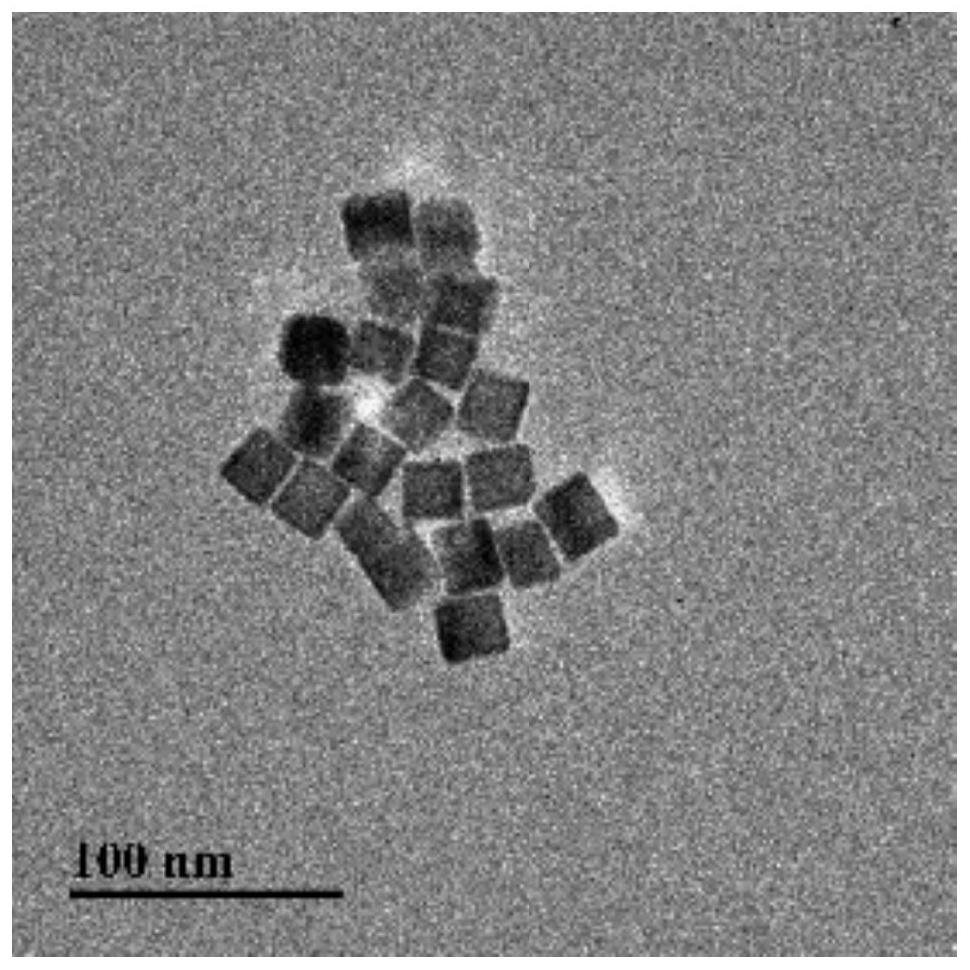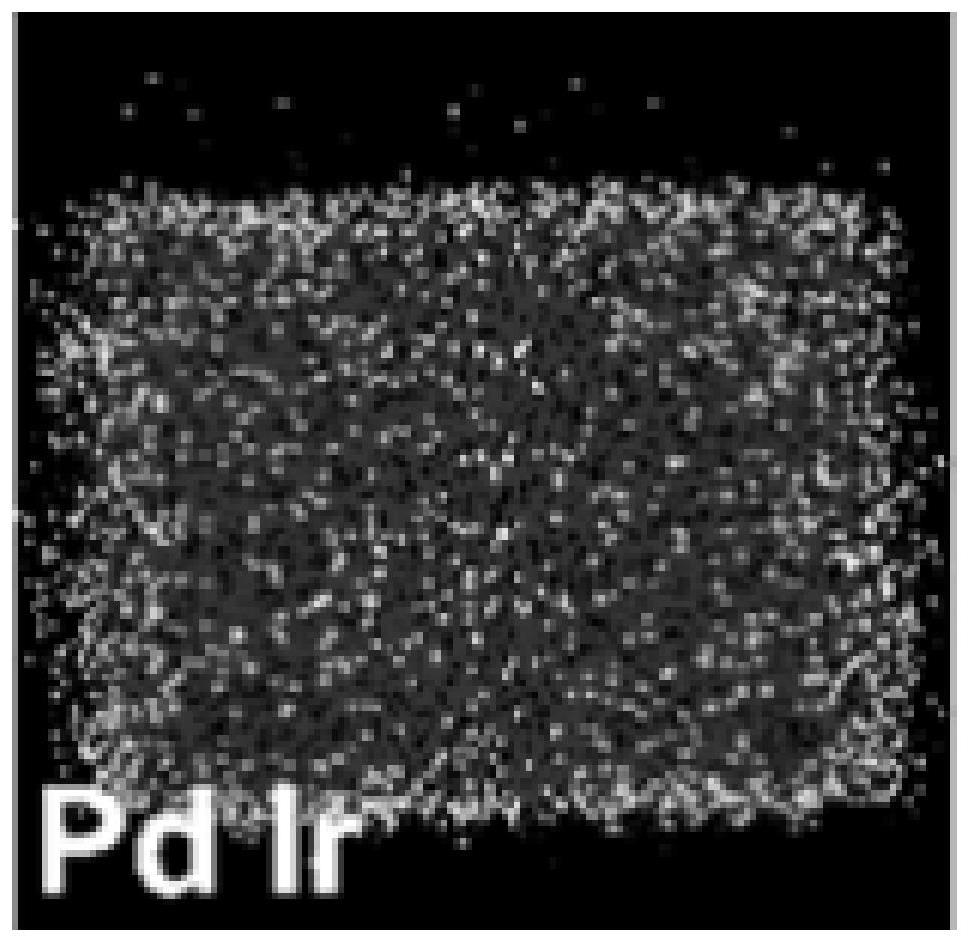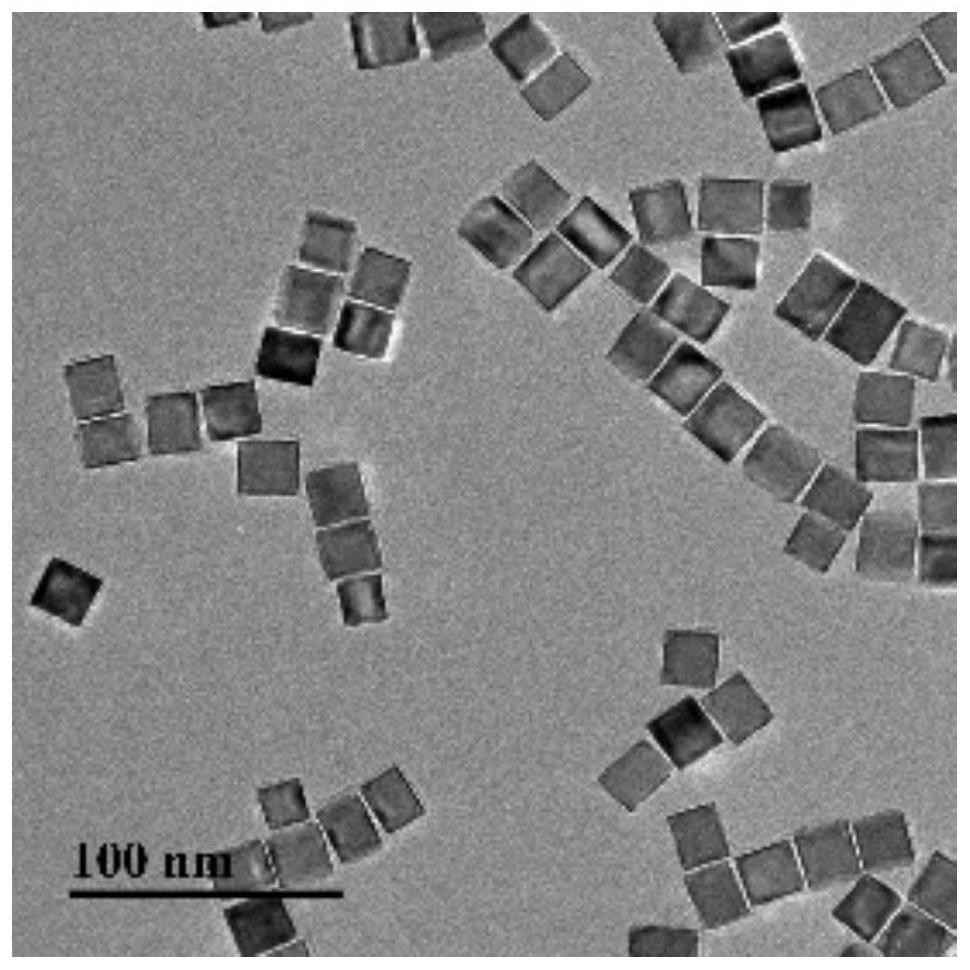Nanoparticle catalyst with ultrathin platinum metal layer and preparation method of of nanoparticle catalyst
A platinum group metal, nanoparticle technology, applied in nanotechnology, nanotechnology, nanotechnology and other directions for materials and surface science, can solve the problems of time-consuming, unsuitable for industrialization, and achieve high safety, easy operation and scale-up The effect of mild production and reaction conditions
- Summary
- Abstract
- Description
- Claims
- Application Information
AI Technical Summary
Problems solved by technology
Method used
Image
Examples
preparation example Construction
[0037] The preparation method of polyvinylpyrrolidone-modified palladium cubes: add 105mgPVP, 600mg potassium bromide and 60mg ascorbic acid into 8mL deionized water at 80°C, then add 3mL 19mg / mL sodium chloropalladate aqueous solution, react for 3 hours and collect by centrifugation Finally, polyvinylpyrrolidone-modified palladium cubes are obtained.
[0038] The preparation method of polyvinylpyrrolidone-modified palladium octahedron: add 105mgPVP to 7mL deionized water at 80°C, add 0.1mL formaldehyde and 0.34mL palladium cube obtained above in advance, and then add 3mL 10mg / mL sodium chloropalladate The aqueous solution was reacted in deionized water at 60°C for 3 hours and collected by centrifugation.
[0039] Preparation method of polyvinylpyrrolidone-modified palladium icosahedron: add 1 mL of 15.5 mg / mL sodium chloropalladate solution to 2 mL of 80 mg / mL PVP ethylene glycol solution, and react at 130° C. for 1 h. Then collected by centrifugation.
Embodiment 1
[0040] Example 1: Preparation of Nanoparticle Catalysts with Ultrathin Iridium Nanolayers
[0041]1. Disperse polyvinylpyrrolidone-modified palladium octahedra with a particle size of 12nm in ethylene glycol to prepare a 1.8mg / mL solution, take 0.3mL of the solution, 50mg PVP, and 50mg KBr and disperse them in 7mL triethylene diethylene glycol Alcohol, ultrasonically mixed thoroughly. The solution was heated to 180°C and kept stirring for 30 min.
[0042] 2. Dissolve iridium chloride in ethylene glycol solution and prepare a solution with a concentration of 4mg / mL, take 0.123mL of the solution and add it to the above solution at 180°C, and react for 4h.
[0043] 3. After the reaction time ends, wash 3 times with ultrapure water and acetone, and dry to obtain the nanoparticle catalyst of the ultrathin iridium nano-layer after being centrifuged at 17500 rpm.
Embodiment 2
[0044] Example 2: Preparation of Nanoparticle Catalysts with Ultrathin Iridium Nanolayers
[0045] 1. Disperse polyvinylpyrrolidone-modified palladium cubes with a particle size of 53nm in diethylene glycol to prepare a 2.4mg / mL solution, take 0.2mL of the solution, 150mg PVP, and 100mg KBr and disperse them in 7mL tetraethylene glycol Alcohol, ultrasonically mixed thoroughly. The solution was heated to 190°C and kept stirring for 30 min.
[0046] 2. Dissolve sodium hexachloroiridate in ethylene glycol solution and make a solution with a concentration of 4mg / mL, take 0.221mL of the solution and add it to the above solution at 190°C, and react for 7h.
[0047] 3. After the reaction time ends, wash 3 times with ultrapure water and acetone, and dry to obtain the nanoparticle catalyst of the ultrathin iridium nano-layer after being centrifuged at 17500 rpm.
PUM
| Property | Measurement | Unit |
|---|---|---|
| particle diameter | aaaaa | aaaaa |
| thickness | aaaaa | aaaaa |
Abstract
Description
Claims
Application Information
 Login to View More
Login to View More - R&D
- Intellectual Property
- Life Sciences
- Materials
- Tech Scout
- Unparalleled Data Quality
- Higher Quality Content
- 60% Fewer Hallucinations
Browse by: Latest US Patents, China's latest patents, Technical Efficacy Thesaurus, Application Domain, Technology Topic, Popular Technical Reports.
© 2025 PatSnap. All rights reserved.Legal|Privacy policy|Modern Slavery Act Transparency Statement|Sitemap|About US| Contact US: help@patsnap.com



